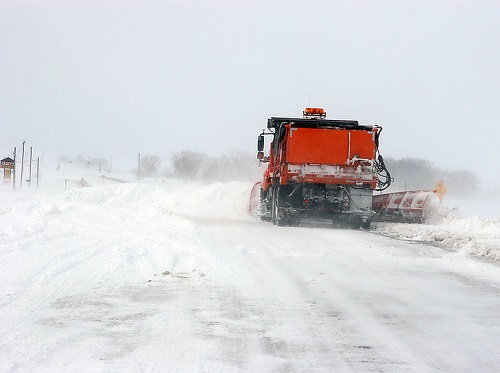In a recent blog post, the Iowa Department of Transportation provided some insight into the ways it is trying to make its snowplow trucks safer both for equipment operators and motorists alike.
[Above photo by the Iowa DOT]
For example, the agency is testing two new “lighting strategies” to help improve snowplow visibility – especially for motorists approaching the vehicle from behind.

First, Iowa DOT is experimenting with a brighter amber-colored light emitting diode or LED light bar atop the snowplow. The second lighting effort involves replacing the center light with two separate lights – one on each side of the truck – that could be programmed to display an amber, white, or blue color.
Tina Greenfield, with Iowa DOT’s Maintenance Bureau, explained in the blog post that the two light set-up helps plow operators see each side of the truck more clearly while, from a mechanical perspective, the new lighting array is simpler and thus less prone to operating issues.
“The new lights are wired to work with existing lighting, and we anticipate it could have a big impact on the safety of both motorists and our operators who are out in winter weather,” she said.

Iowa DOT is also testing several wiper blade technologies this winter season to provide a clearer forward view to plow operators.
The first is a heated wiper blade package, with two versions being tested, that are supposed to “burn through” fine frost and mist. The second is a “home grown” wiper fluid heating system, designed by its DeWitt garage, whereby wiper fluid is heated via a fluid hose run around the truck’s radiator pipe. The third package is a “wiper shaker,” which uses a little motor attached to the wiper blade that shakes the blades free of ice and snow.
“So much of what our snowplows push through comes up over the hood of the cab and onto the windshield,” Greenfield noted. “That means our snowfighters have significantly more visibility issues than the average vehicle.”
She added that operator surveys, as well as equipment performance data, will help the agency determine which wiper blade technology package works best and could be installed fleet wide.
 States
States
NCDOT Staff Participate in ‘Explosive’ Technical Training
December 19, 2025 States
States

